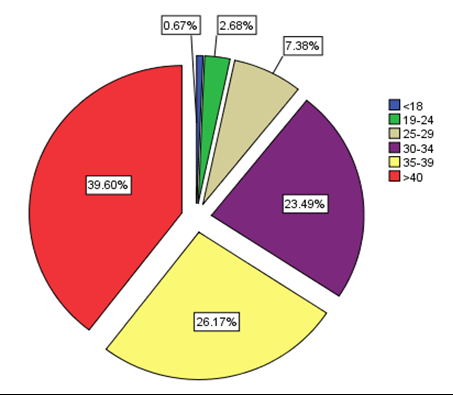Abstract
Age-related #macular degeneration (AMD) is the leading
cause of visual impairment and blindness after fifty years old in
developed countries [1,2]. It is estimated AMD will affect 288
million of elderly in 2040 [3]. This pathology is defined by a
uni- or bilateral progressive degeneration of #photoreceptors in
macular area, peripheral vision is conserved. The early level of
AMD is characterized by an accumulation of extracellular material
(“drusen”) underneath the retinal pigment epithelium and/or
irregularities of retinal pigment epithelium. At the advanced level
of AMD, the disease gets complicated with a geographic atrophy in
dry AMD, or a choroidal #neovascularization (growth of #pathologic
blood vessel from the #choroide into the subretinal space) in the wet
AMD. This one just affects 10-15% of AMD subjects but emerges
and progresses quickly to blindness without #intravitreal injection
(IVT) of anti-VEGF [4]. Thus, the majority of patients (dry AMD) has
no curative treatment, loses visual acuity and his #autonomy step
by step [5]. AMD gives functional disability (risk of falls, difficulty
reading, driving restriction, etc). Some authors evaluated that 33%
of subjects older than 65 years have experienced at least one fall
per year [6,7].
For more articles on BJSTR Journal please click on https://biomedres.us/
For more Medical Research Articles on BJSTR



No comments:
Post a Comment
Note: Only a member of this blog may post a comment.